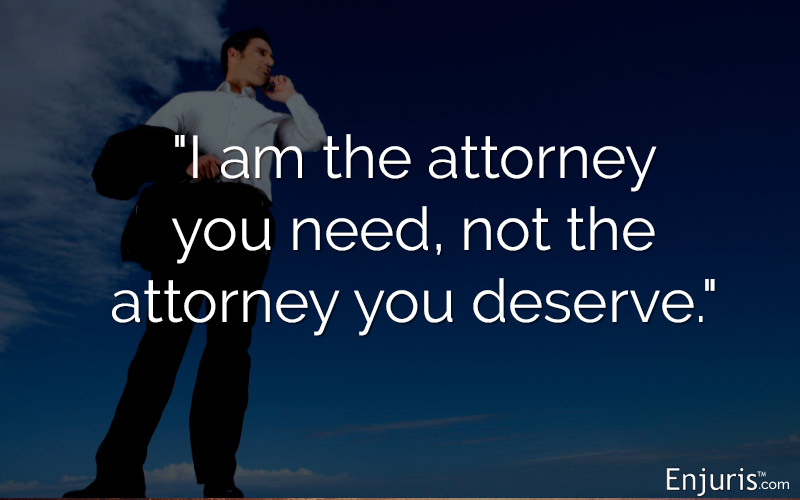Before you file a claim, find out how New York laws can affect your legal right to compensation
Car insurance experts estimate that you will file a collision claim about once every 18 years. That means the average driver is involved in 3 to 4 accidents during their lifetime. That might sound scary, but most of these crashes aren't deadly highway pile-ups. In fact, there are about 10 million accidents each year and most are minor collisions, parking lot scrapes, or similar incidents.
Even a minor car accident can be frightening and expensive, though. You might feel shaken up after a collision, even if you're not physically injured. And if you've ever had to have your car repaired, you probably know that what appears to be minor damage can lead to a costly bill from the mechanic.
That's why it's important to understand how New York car accident law works and when you might need more than what the insurance company is willing to provide.
New York car accident statistics
These facts are provided by the New York State Health Department for the years 2012-2014, which reflects its most recent reporting:
| New York car accident statistics (2012-2014) | |
|---|---|
| Unintentional motor vehicle traffic-related injuries | 1,098 average per year (5.6 of every 100,000 New York residents) |
| Hospitalizations from motor vehicle-related injuries | 12,093 average per year (61.5 of every 100,000 New York residents) |
| Emergency department visits from motor vehicle-related injuries | 136,913 average per year (696.6 per every 100,000 New York residents) |
| Diagnosis of Traumatic Brain Injury (TBI) following a traffic crash | 32% of people treated in hospitals |
New York no-fault car insurance
A no-fault insurance system doesn't mean that it doesn't matter who's at fault for an accident. It means that after an accident, you need to file a claim under your own personal injury protection insurance for compensation for your injuries, regardless of who was at fault. There are some situations when you may pursue the at-fault driver's insurance for certain types of claims.
It's possible that your insurance doesn't cover the full extent of your claim if you have serious injuries. In such cases, you can file a claim against the at-fault driver if your injury meets certain requirements. These requirements include:
- Significant disfigurement
- Bone fracture
- Permanent limitation of use of a body organ or limb
- Significant limitation of use of a body function or system
- Substantially full disability for 90 days or longer
If your injuries fall into one of these categories, you're not limited to a claim on your own insurance. Instead, you can pursue a third-party insurance claim or a personal injury lawsuit.
Recovering damages from a car accident
After a New York car accident (or any personal injury), the injured person is usually entitled to compensation. The intent of personal injury law is that if someone was negligent, the plaintiff (injured person) should be made whole — in other words, restored to the financial position they would be in if the injury hadn't happened.
Car accident damages fall into two categories: economic and non-economic.
Economic car accident damages
Economic damages are those with a specific monetary value, such as:
- Medical treatment (doctor and hospital visits, surgeries, prescription medication, X-rays and other diagnostics, assistive devices, etc.)
- Rehabilitative therapies (physical, speech, occupational)
- Assistance with daily life activities (housekeeping, childcare, etc.)
- Lost wages, past and future
- Property damage
Non-economic and punitive car crash damages
Non-economic damages are also intended to compensate an injured person for their losses, but the losses are those that don't have a specific money value. Examples of non-economic damages include:
- Pain and suffering (emotional distress)
- Loss of consortium or companionship
- Loss of enjoyment of daily life
Although it's hard to attach a cost to these intangibles, the legal system has certain methods for calculating non-economic damages.
Another less common form of non-economic damages is punitive damages. Punitive damages can be awarded by the court in a personal injury lawsuit if the defendant's action (or omission) was so willfully negligent or reckless that the court determines it warrants punishment. A punitive damage award is separate from (and in addition to) the plaintiff's regular damages award.
New York comparative negligence law
The first question any insurer or lawyer will need to answer after a car crash in New York is about who was at fault. Sometimes liability is clear, but more often than not both drivers (or all drivers if more than two vehicles are involved) will have some degree of fault.
There are 2 important aspects to recovering damages:
- The amount of money lost because of the injury (costs)
- Who was at fault, and to what degree
In a comparative negligence state like New York, each party is assigned a percentage of fault. Even if the defendant clearly caused the accident, if the plaintiff could have reacted a moment sooner or acted slightly differently in a way that might have prevented the accident, then the plaintiff could bear a small degree of liability.
Example of New York comparative negligence
Defendant David was on his way home from work. He was eager to get home because he had a party to attend that night and wanted to get home in order to be on time.
Plaintiff Patrick was also returning home from work. He was tired and wanted to get home to enjoy a quiet evening.
David was driving east on Main Street in Buffalo, NY. He was speeding just a little because there wasn't much traffic and he wanted to get home in a hurry. His playlist ended and he grabbed his phone for a second, just to hit “play” on another playlist to keep the tunes going. In that split second, his car swerved just a little over the middle line and into the opposite lane.
Patrick was driving carefully west on Main Street and within the speed limit. Although he wasn't dozing off, he yawned with a long blink — right when David, in the oncoming vehicle, was looking at his phone.
Both drivers had a momentary lapse, and Patrick didn't swerve quickly enough when David's vehicle entered his lane. They suffered a head-on collision.
David suffered only minor injuries and was treated at the scene. Patrick was more seriously injured and had several broken bones, a few of which required surgery. He was unable to return to work for 4 months following the accident.
Patrick's costs related to his injury and time out of work exceeded the limits of his own insurance policy, so he made a claim against David's policy for the rest of the costs. David's insurance company declined to cover the extent of the damages, so Patrick filed a personal injury lawsuit.
Patrick's costs related to his surgeries, lost wages, and other expenses amounted to $500,000. After hearing the facts of the case at trial, the court found that although Patrick didn't cause the accident, if he'd been a little more alert he might have swerved out of David's way sooner and the collision could've been avoided. Therefore, the court assessed Patrick as being 20% liable for the crash.
Patrick's damage award of $500,000 will be reduced by 20% — or $100,000 — so he will recover $400,000 for the accident.
What to do after a car accident in New York
In the immediate aftermath of a car crash, you're probably reeling with emotion — maybe feeling grateful to be alive, worried about the severity of your injuries, in disbelief that it happened, or stressed about how you're going to pay for medical bills and damage to your car.
You might also be unsure as to whether you were at fault.
Regardless of how the accident happened, there are steps you can take to preserve your legal rights and recover damages. First, though, in the moments after an accident, evaluate your own condition, your passengers, and other involved individuals. If you're unable to move or follow the steps below, don't worry. Call 911 if you're able; if you can't, wait for someone to provide you assistance.
If you are able, these tips can help you after an accident:
- Call the police. In New York, a crash must be reported to the DMV if it results in injury, death, or property damage more than $1,000. If a police report is filed, it is automatically reported to the DMV. Even if you think the crash is so minor that it doesn't meet those requirements, a police report can be an important piece of evidence for your claim (or the other driver's claim), so having a police officer on the scene can be beneficial.
- Document the scene. The more information you can gather, the better. At the very least, write down the name, address, phone number, and driver's license number of every involved driver. Also, write down each vehicle's license plate number, registration, and insurance information. It's sometimes easier to take photos of these documents and items so you're certain you don't make any mistakes. The police report should also contain all of this information, but it's important for you to have a copy as well, just in case.
- Take photos. Weather and road conditions, visibility, traffic signals, and other factors can all contribute to an accident. Take as many photos as you can to describe the scene and conditions leading up to the accident. Take photos from a variety of angles, and capture the points of view of all involved drivers. Lastly, don't forget to photograph any damage to your vehicle and any other vehicles involved in the accident.
- Obtain witness information. Eyewitnesses can be a crucial part of a car accident claim. If there are witnesses, write down their names and contact information. You might want to look outside the immediate area. If your accident was in a parking lot, for example, there could be a shopper in a store who saw the accident and who could be a valuable witness, but that person might not come forward right away.
- Ask about surveillance video. Depending on the location of the accident, if the road or parking lot was visible to any business, it's possible that there's video footage showing how the crash happened. Ask surrounding businesses or property owners if there's any video that captured the crash. Make these inquiries as soon as possible after the crash because many businesses don't maintain surveillance footage for more than a few days.
- Get a complete medical examination. You might think you're uninjured after a crash. But some conditions might not appear instantly — you might not experience symptoms until days or weeks later. If you do have effects that appear later, it will be harder to prove that they were caused by the accident. It's important to visit a hospital or doctor immediately following a crash so that your medical condition is fully documented.
- Notify your insurance company. A “report” is different from a “claim.” Whether or not you think you were at fault for the crash, you still should report it to your insurance company. With certain insurance companies, if you fail to report an accident within a certain period of time, you can lose your right to a claim or settlement. Most insurance companies require that you report any collision, even if you're not intending to file a claim or if you're planning to pay out of pocket for repairs.
When to consult a New York car accident lawyer
Some car accidents are resolved simply and amicably among the involved parties. If you're in that situation, you're lucky. No one wants an issue to drag on at length, and you probably want to be able to cover your costs as quickly as possible so bills don't begin to pile up.
But what if it's not so simple?
Remember this:
Your insurance company isn't always on your side. Your insurance company profits by paying out as little to its customers as possible. It's not in the business of being generous; it's in the business of making money.
So, even though you're the customer and it might seem like your insurer is working for you when making a claim against another insurance company (or defending you against another insurance company), understand that your insurance company has its own best interests in mind — not yours. And your insurance adjuster's job is to settle and close your claim as quickly as possible, while spending the least money.
Your lawyer, on the other hand, is here to help you.
Most car accident lawyers work on a contingency fee basis, which means you don't pay for their services up front. When you receive a settlement or damage award, they receive a percentage of that amount. Most also offer a free consultation, which means you can have an honest conversation about the facts and what you need to recover, and they can present you with legal options.
There are 2 main reasons to contact a personal injury lawyer:
- The settlement being offered by the insurance company is insufficient to cover your damage costs.
- You have ongoing medical treatments and future expenses associated with the accident.
If your costs aren't already established (if you will continue to accrue costs associated with the accident), you should consult an attorney so they can make an accurate assessment of your financial needs. Your attorney will consult with medical experts, accountants, actuaries, and other financial professionals to correctly calculate not just what you need now, but what your costs will be in the future.
- What To Do After a New York Car Accident
- Distracted Driving Car Crashes in New York
- Legal Rights After a New York Motorcycle Accident
- New York Auto Laws: No-Fault, Liability, and UM/UIM Insurance
- New York Bus Accident Laws and Regulations
- New York Drunk Driving Accidents & DWI Laws
- New York Hit and Run Accidents
- What To Do After a Bike Accident in New York
- What To Do After a New York Rideshare or Taxi Accident
- What To Do After a Pedestrian Accident in New York
- What to Do If You’re in a Train Accident in New York
Did you know that car accident law varies by state?
Need a lawyer?
What does an injury lawyer do?
A personal injury lawyer helps individuals who have sustained injuries in accidents to recover financial compensation. These funds are often needed to pay for medical treatment, make up for lost wages and provide compensation for injuries suffered. Sometimes a case that seems simple at first may become more complicated. In these cases, consider hiring an experienced personal injury lawyer. Read more














